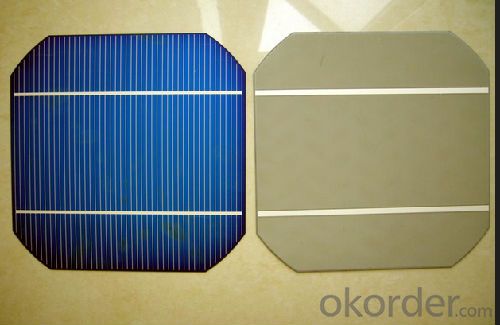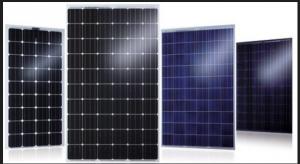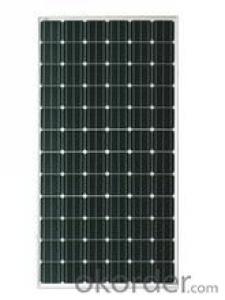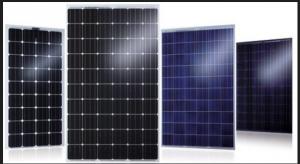Solar Cell from China with Good Quality Better Price
- Loading Port:
- China main port
- Payment Terms:
- TT or LC
- Min Order Qty:
- 100 m.t.
- Supply Capability:
- 10000000000 m.t./month
OKorder Service Pledge
OKorder Financial Service
You Might Also Like
Quick Details
Packaging & Delivery
| Packaging Detail: | Standard export carton for container order, extra pallet for LCL. |
| Delivery Detail: | 15-20 days for 300KW after recept of deposit |
Specifications
250w solar panel
CE, ISO9001,TUV approved
7-15 days delivery for 120KW
20 years product guarantee
carbon free energy solar cell 250w 260w monocrystalline silicon solar panel ,TUV,CE
EJ60M is a good selling type. It features A-grade high efficiency monocrystalline solar cells and is assembled in compliance with EJAI’s unique quality standards. Featuring 60 6” solar cells, the EJ60M not only is a preferred option for residential systems, but also proved to be a great match for commercial and large-scale applications
Specification:
Model | EJ60M-250 | EJ60M-255 | EJ60M-260 |
Maximum Power (Pmax) | 250Wp | 255Wp | 260Wp |
Power Density (Wp/m2) | 153.7 | 156.7 | 159.5 |
Maximum Power Voltage (Vmp) | 30.52V | 30.62V | 30.70V |
Maximum Power Current (Imp) | 8.19A | 8.33A | 8.47A |
Open-Circuit Voltage (Voc) | 37.54V | 37.66V | 37.76V |
Short-Circuit Current (Isc) | 8.84A | 8.99A | 9.14A |
Cell Efficiency | 17.9% | 18.3% | 18.7% |
Module Efficiency | 15.4% | 15.7% | 16% |
No. of Diodes | 6 | ||
Maximum System Voltage | 1000V | ||
Maximum Series Fuse Rating | 15A | ||
Power Tolerance | -0/+3% | ||
Temperature Coefficients of Pmax | -0.43%/°C | ||
Temperature Coefficients of Voc | -0.3%/°C | ||
Temperature Coefficients of Isc | +0.04%/°C | ||
Nominal Operating Cell Temp. (NOCT) | 45±2°C | ||

FAQ:Could you introduce your company ?
CNBM is a China state owned company ,one of Global Fortune 500 .
- Q:Can solar cells be used on backpacks or camping gear?
- Yes, solar cells can be used on backpacks or camping gear. These portable solar panels can be attached to backpacks, tents, or other camping gear to harness solar energy and charge devices such as smartphones, GPS devices, or portable speakers while on the go. This allows campers and hikers to have a reliable source of power in remote locations and reduces the need for carrying extra batteries or relying on traditional power sources.
- Q:Can solar cells be used for powering drones?
- Yes, solar cells can be used for powering drones. By converting sunlight into electricity, solar cells can provide a renewable source of power to drones, reducing the need for traditional batteries and increasing flight duration. Additionally, solar-powered drones have the potential to operate for extended periods without the need for frequent recharging, making them more sustainable and cost-effective in various applications.
- Q:How does the solar cell work properly?
- Silicon, as one of the most important semi-conductor material, plays a vital part in how to make the solar cells work.
- Q:Can solar cells be used for powering sports stadiums?
- Yes, solar cells can be used for powering sports stadiums. They have the ability to generate electricity from sunlight and can be installed on the roof or surrounding areas of the stadium. This renewable energy source can help reduce the carbon footprint of the stadium and contribute to a more sustainable and environmentally friendly power supply.
- Q:How do solar cells perform in different geographic locations?
- Solar cells perform differently in different geographic locations due to variations in sunlight intensity and duration. Generally, solar cells perform better in regions closer to the equator with higher solar irradiance. However, solar cells can still generate electricity in less sunny locations, although their efficiency may be lower. Factors such as climate, cloud cover, pollution, and shading also impact solar cell performance. Additionally, the angle at which solar panels are installed can optimize energy production in specific geographic locations.
- Q:How do solar cells perform in areas with high levels of air humidity?
- Solar cells generally perform slightly less efficiently in areas with high levels of air humidity. This is because the water molecules in the air can scatter and absorb some of the incoming sunlight, reducing the amount of light that reaches the solar cells. However, the impact of humidity on solar cell performance is generally minimal and can be compensated by using anti-reflective coatings or cleaning the panels regularly.
- Q:Can solar cells be used in hybrid systems?
- Yes, solar cells can be used in hybrid systems. Hybrid systems typically combine multiple sources of energy, such as solar and wind power, to generate electricity. Solar cells can play a crucial role in such systems by harnessing solar energy and converting it into electrical power, which can be used alongside other energy sources to meet the electricity demand. This integration of solar cells in hybrid systems helps enhance energy efficiency, reduce reliance on conventional sources, and promote sustainable energy solutions.
- Q:How much land is required to install solar cells?
- The amount of land required to install solar cells varies depending on various factors such as the type and efficiency of the solar panels, the amount of electricity desired, and local conditions. On average, it is estimated that 1 megawatt (MW) of solar power requires approximately 5-10 acres of land. However, advancements in solar technology have led to the development of more efficient panels, reducing the land footprint needed for installation. Additionally, innovative approaches like rooftop solar panels can utilize existing structures, minimizing the need for additional land.
- Q:Can solar cells be used in traffic management systems?
- Yes, solar cells can be used in traffic management systems. Solar cells are a renewable and sustainable source of energy that can provide power for traffic lights, road signs, surveillance cameras, and other equipment used in traffic management systems. By relying on solar energy, these systems can reduce their carbon footprint and decrease dependency on grid electricity.
- Q:Can solar cells be used for powering outdoor signage?
- Yes, solar cells can be used for powering outdoor signage. Solar cells convert sunlight into electricity, which can be stored and used to power various devices, including outdoor signage. This allows the signage to operate independently of the electrical grid, making it a cost-effective and environmentally-friendly solution.
1. Manufacturer Overview |
|
|---|---|
| Location | |
| Year Established | |
| Annual Output Value | |
| Main Markets | |
| Company Certifications | |
2. Manufacturer Certificates |
|
|---|---|
| a) Certification Name | |
| Range | |
| Reference | |
| Validity Period | |
3. Manufacturer Capability |
|
|---|---|
| a)Trade Capacity | |
| Nearest Port | |
| Export Percentage | |
| No.of Employees in Trade Department | |
| Language Spoken: | |
| b)Factory Information | |
| Factory Size: | |
| No. of Production Lines | |
| Contract Manufacturing | |
| Product Price Range | |
Send your message to us
Solar Cell from China with Good Quality Better Price
- Loading Port:
- China main port
- Payment Terms:
- TT or LC
- Min Order Qty:
- 100 m.t.
- Supply Capability:
- 10000000000 m.t./month
OKorder Service Pledge
OKorder Financial Service
Similar products
New products
Hot products
Hot Searches
Related keywords




























